Dogs are the best road trip partners, especially since they don’t have a say in the music and are always happy to be by your side! But traveling with a furry companion does mean you have to prepare. There are several items to bring and scenarios you need to plan for so that you and your doggo can enjoy a stress-free and safe road trip together. To make it even more stress-free, we have researched and thought of everything you need to do and pack prior to hitting the road in this ultimate guide to road-tripping with a dog.
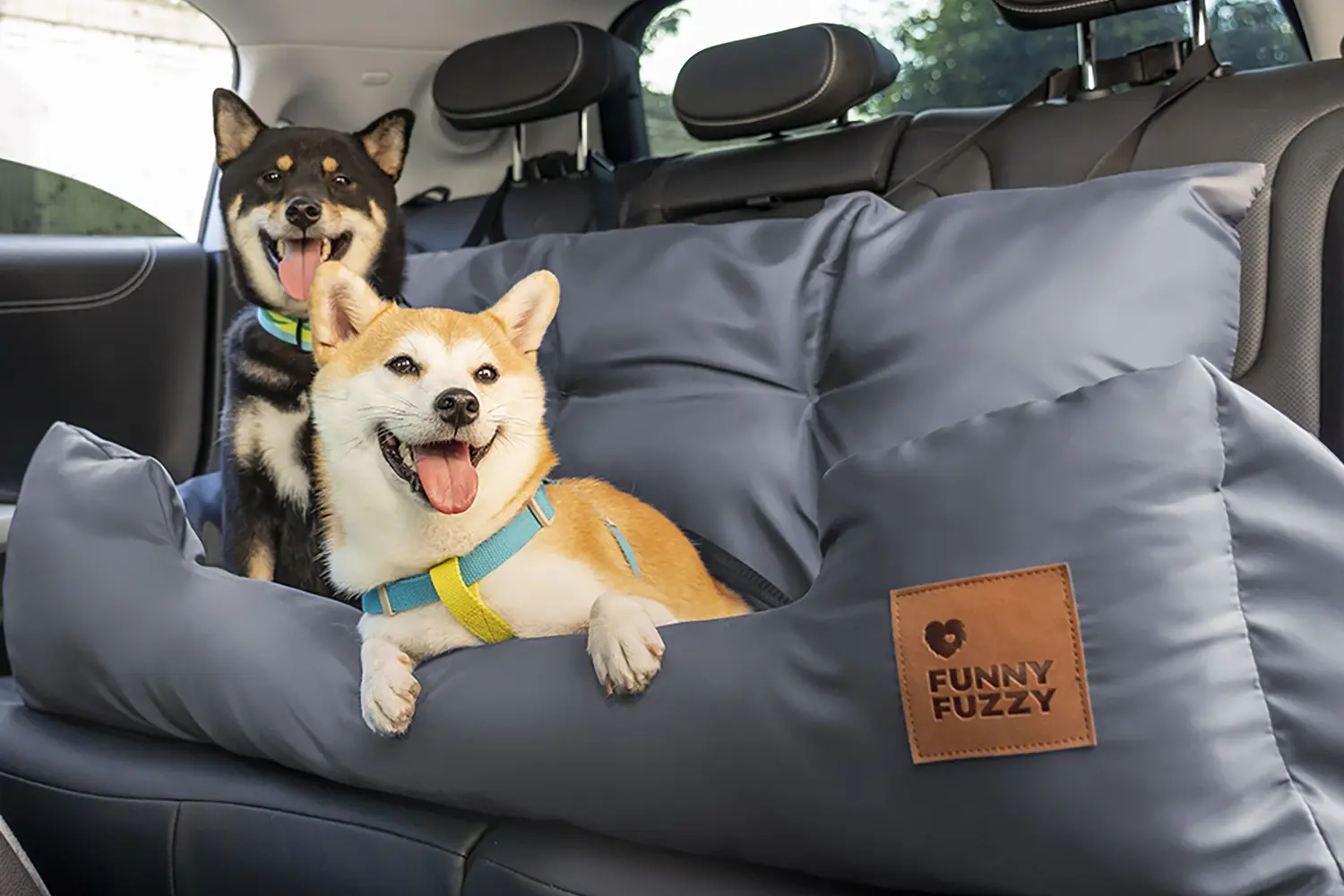
Essentials to Pack
Traveling with your dog is a little bit like traveling with a baby or a toddler; you’re going to have to pack a lot of their stuff! Below we’ve listed all the essentials and then some so that you’ll be well prepared for your journey.
Seat Belt
Depending on your dog’s preferences and the size of your dog, you’re going to have to plan out where they will be seated during the car ride. The best way to secure your dog in any seat is with a specialized dog seat belt. As we stated before, dog seat belts and safety harnesses are sometimes required in certain states and provinces, so it’s best to get one in advance to get your dog used to it on smaller journeys before heading out for the big road trip. Dog seat belts work by clipping onto a dog’s collar or harness and then attaching to the regular car seat belt. These work best with dogs who are well-behaved and comfortable staying in one position in the car.
Car Seat
Another option is to purchase a dog car seat, which is a more luxurious form of travel for our furry friends. A car seat has several benefits, especially for small dogs. They offer a safe enclosed area where your dog is protected from falling from sharp turns and sudden stops. It also offers a place for them to rest their head or to prop themselves up to see out of the window.
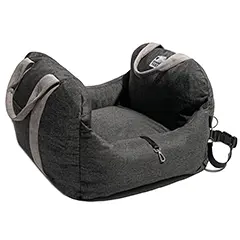


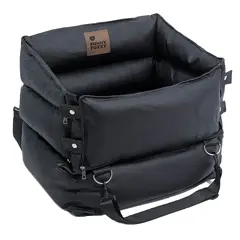
Seat Cover or Dog Blanket
A seat cover is always a good idea when you have pets in the car. As much as we love our pups, their nails can be sharp and puncture your leather seats or they can be dirty and stain your seats. To avoid messes in the car, consider purchasing a seat cover that can be easily removed and machine-washed for messes in the car. Another option is to purchase a dog blanket. Dog blankets are a great way of making the car feel more like home and can protect your seats from punctures, dirt, rain, and drool.
Carrier
Carriers are a great idea for car ride journeys, especially if you have a small dog. They help to provide a den-like setting for your pup to feel more comfortable and secure, so long as you pack the carrier with a blanket and toys from home. Carriers are also a very safe way of transporting your dog as they will provide protection from falling, are strapped into the car’s seat belt for additional security, and help to stop your dog from distracting the driver. You should always strap the carrier into the back seat of the car with the front of the carrier facing the front of the car. Never put a carrier on the ground as the floor of the car is more sensitive to bumps and can subsequently cause your pet to get motion sickness.
Water and Food Bowls
First things first, your dog is going to need to eat and drink! Don’t forget to pack their food and water dishes, along with a refillable bottle of water for your dog to have access to on the road, plus some food or treats. Bringing their water and food bowls from home also contributes to your dog’s comfort, so if you purchase new travel bowls for the trip, use them at home first to get your dog used to them. This is also a good time to mention that you never feed your dog in a moving vehicle as it can cause them to get motion sickness! Always remember to offer your dog water and light snacks when you stop for breaks.
Leash, Collar, and Poop Bags
When you stop for breaks with your dogs on the road, you don’t want to forget the basics! This means bringing along a collar that identifies your dog (just in case they get loose), a leash for public areas, and poop bags for their bathroom breaks. If your dog is more comfortable walking in a harness, don’t forget to pack that along with these other essentials.
Toys
Look, car rides can be fun but they also can get a bit boring for passengers… even your dog! They will want to stay entertained along the way and on driving breaks, so remember to pack some dog toys. Just like with the bowls, it’s best to bring familiar toys so that your pup can have a homey comfort while traveling. If you purchase a new toy as a present for you and your dog’s journey, give it to them in advance so they can associate the toy with home. Do keep in mind that squeaky toys can be quite distracting if you’re driving, so you may want to leave those loud toys at home.
Medications and First Aid Kit
As we stated before, you’ll want to remember to pack any medications that your dog takes, and it’s a good idea to bring extras in case you lose some or extend your trip. On top of medications, you may want to consider packing your pooch a first aid kit. A good first-aid kit for pups has specialized dog items like gauze and bandages, medical scissors, anti-bacterial spray, tick-removing tools, an ice pack, tweezers, non-medicated saline rinse, Benadryl (Diphenhydramine), a muzzle, alcohol wipes, a towel, and safety gloves.
Dog Jackets and Shoes
Depending on the climate of your final destination, you may want to pack your pooch with some clothes or shoes. If you’re planning on visiting a destination with a lot of heat, a pair of dog shoes is a good idea. In states like Florida, California, and Arizona, temperatures can get extremely hot to the point the pavement can burn your dog’s paws. To avoid causing damage to your dog’s paws, put a pair of shoes on them. If you’re planning on visiting a state or province with very cold weather (here’s looking at you, Canada), you might want to bring along a jacket to help keep your furry friend warm. Some dog breeds like huskies and German shepherds have thick coats that are ideal for colder temperatures. But other small dog breeds or short-haired breeds like greyhounds aren’t built for cold temperatures and would definitely appreciate the extra heat when they are headed out for a walk!
What to Research Before Leaving
Before you go and pack your car for your road trip with your dog, there is still some information you will want to research in advance. You also never know what might happen on the road, so it’s best to be prepared for all scenarios just in case.
Pet-Friendly Hotels & Airbnbs
If you’re planning a multi-day road trip with your pup, you’ll definitely want to familiarize yourself with pet-friendly hotels and Airbnbs along your route. We recommend booking your pet-friendly accommodation in advance to ensure you get a room and to have a destination set for the day so you know roughly how long you’ll be driving each day with your dog.
Plan For Bathroom Breaks and Walks
Having your furry best friend as your passenger princess can make for a fun road trip, but road-tripping with your dog does make the drive longer as you’ll want to take plenty of bathroom and exercise breaks. You don’t want to neglect your dog’s needs and they can’t exactly tell you when they need to go potty, so it’s best to plan for a 20-minute bathroom break every two to four hours if you have an adult dog and every one to two hours for puppies. Most gas stops along major highways have some grassy area nearby to walk your dog around or you can pin dog parks on your phone’s map in advance so you know each place you’ll be stopping.
Recommendation: You can download the DogPack app to make finding dog-friendly parks and trails along your route even easier. The app provides a whole map of spots where your dog can enjoy some on-leash or off-leash play!
Research Emergency Vet Offices
Whether you’re taking your pup on an overnight trip or on a day trip, it’s a good idea to research emergency veterinary offices at your final destination. You never know what could happen while traveling with your pet, so just in case of an emergency you’ll want to have the names of top emergency vets on hand so you’re well prepared.
Additional Medication
Dog owners will definitely want to remember to pack and bring their dog’s medication, and even pack extra just in case. However, another medication your dog may need is anti-nausea pills. According to the American Pet Products Association (APPA), roughly half of dogs experience motion sickness while riding in the car. Motion sickness for dogs looks different than humans. Indicators that your dog may need motion sickness pills are if they are constantly licking their paws or lips, excessively drooling, whining, yawning, or vomiting. If you often travel with your dog in the car you may have noticed these behaviors already. However, if this is your dog’s first big trip or if they have never been in the car before, you will need to take them on a few short drives to get them used to the car. This will help them be more comfortable during your big journey and also gives you a chance to look out for signs that your dog suffers from motion sickness. You can help combat your dog’s motion sickness by feeding them a light meal a few hours before leaving and by giving them lots of water to stay hydrated.
Another thing to consider is your dog’s personality. Not all dogs like the car, especially if they are anxious, reactive, or easily excitable. If this sounds like your dog you may want to think twice about whether or not a long car ride will be good for your furry friend. If your pup absolutely needs to travel with you, then consider looking into calming supplements and aids. There are several over-the-counter medications, but we recommend against purchasing these since they are not always tested for dog safety. The best thing to do is take your pupper to your vet prior to leaving and ask them for recommendations or prescriptions. Your vet will already know your dog’s medical history and can make recommendations accordingly.
Additional Vaccines
It’s also a good idea to check with your vet if there are any specific vaccines your dog should have before traveling to a certain destination. For example, in the warmer American states like Florida and Texas, your dog is more at risk of contracting Leptospirosis, while in the northern states and Canada, your dog is more likely to contract Lyme disease from deer ticks. It’s best to be prepared and make sure your fluffy companion is well protected by consulting with your vet.
If you’re planning on crossing international borders with your pup, then you will need to look into the country’s vaccination and medical requirements for your dog to be able to cross into the country. For example, if you’re traveling into Canada from the USA or vice versa, you will need proof of a current rabies vaccination if your dog is over three months old. Some countries even require a health certificate from your vet, which is different from their medical history.
Documents and Health Records
When traveling with your dog, especially over international borders, you will want to have all your dog’s correct and current documents on hand to make your journey as seamless as possible. You should contact your vet in advance and ask for both a physical and digital version of your dog’s medical records, along with any vaccine certificates required to cross international borders. This way if your phone dies or you lose your copy, you’ll always have an extra set on hand. This is also a good time to make sure your dog’s microchip is up to date with all their current information.
Where Your Dog Can Sit Legally in the Car
You may be wondering whether it is safe to have your dog in the front seat of your car. Before you even think of having them sit shotgun, you should know that some states/provinces have banned dogs from riding in the front seat and on laps, and additionally, some states/provinces have made it a requirement for your dog to be harnessed in a seat belt. You will want to look into the laws and requirements of each state and province you are driving through so that you can avoid a ticket. Some states that require your dog to be in a harness include Oregon, New Hampshire, Connecticut, and Rhode Island.
Technically, the safest place for your pet to sit during a car ride is in the backseat as the front passenger airbag could seriously injure your dog if you got in a car accident. A shotgun-riding doggo can also be a distraction for the driver. That said, you may have a full vehicle for your road trip and need to put your pup in the front seat. In that case, you will have to use your best judgment and plan a route that doesn’t go through states and provinces where it’s illegal or risk the ticket.
Do’s and Don’ts of The Road
Now that you know what to pack and plan, we’ve created this additional section of tips and tricks to help you have a safe and stress-free journey with your dog.
Do:
- Keep the car well-ventilated.
- Stop frequently for bathroom breaks and for some playtime.
- Have your dog’s medical history and vaccination certificates on hand.
- Microchip your dog and identify your pet with a collar that has their information (name, address, and your phone number) on it.
- Feed them a light meal a couple of hours prior to leaving to help them avoid car sickness.
- Make sure your dog is well-hydrated before and during the car ride.
Do NOT:
- Leave your dog alone in a parked car, especially in warm weather, as the temperatures could get so high inside that it could kill your pup.
- Let your dog lay on the floor of the car as it is more sensitive to bumps and can make them car sick.
- Let your dog put their head out the window. We know they love the smells and wind in their fur, but they could get struck by debris or get thrown out of the car during a collision or sharp turn.
- Allow your dog to sit on your lap. This is illegal in many states and provinces as the dog could distract you or even crawl down to where the pedals are and restrict you from being able to drive.
- Base your estimated time of arrival on Google or Apple Maps. You’ll need to make several bathroom and exercise breaks along the way, so you’ll have to tack on that time to the general driving time.
There you go my dog-loving friends, the ultimate guide to everything you need to know before heading out on a car trip with your pooch. If you and your pup are planning on doing any hiking at your final destination, then check out our list of the best dog hiking backpacks!
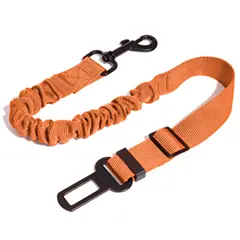
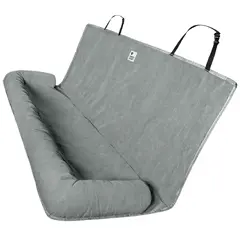

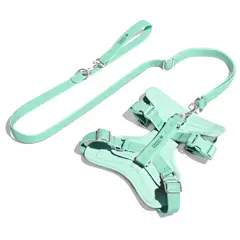
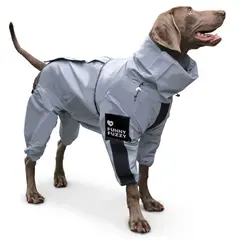
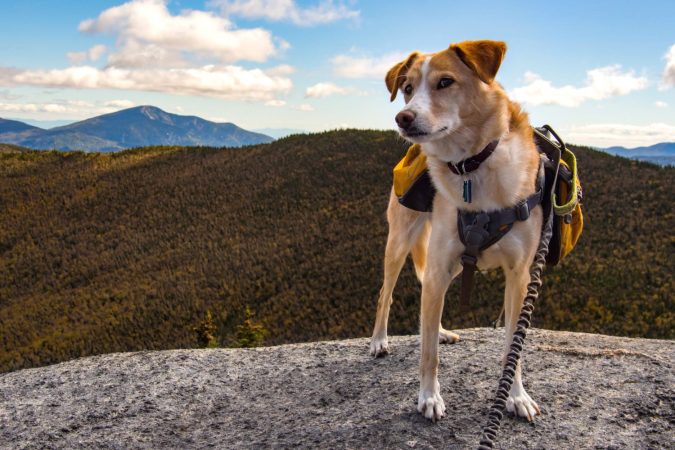
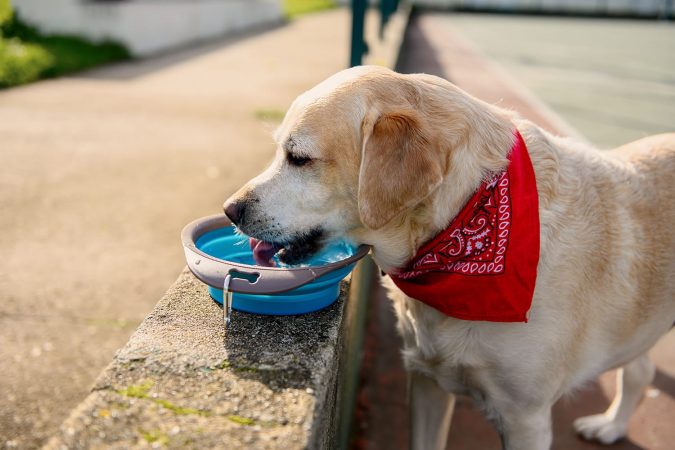
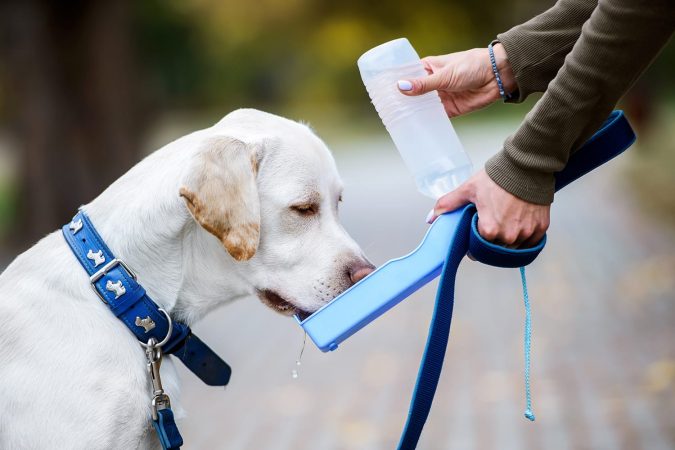

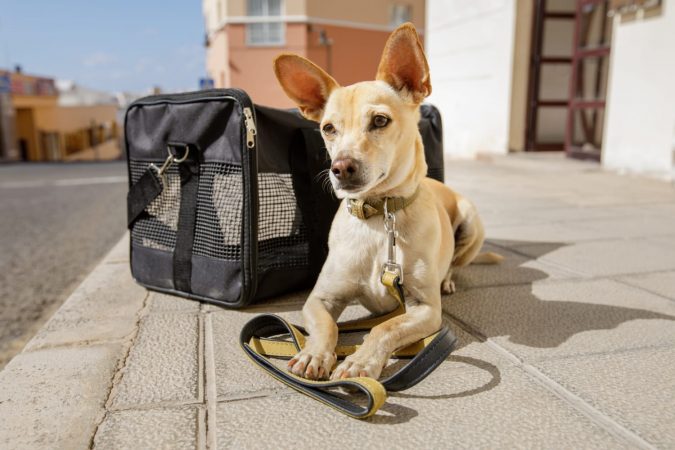
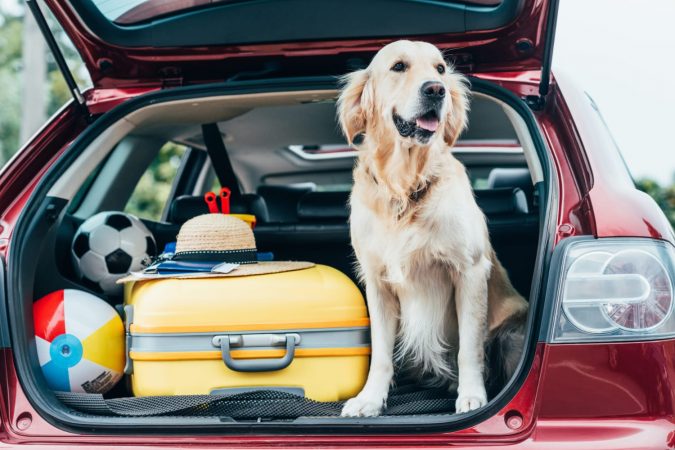
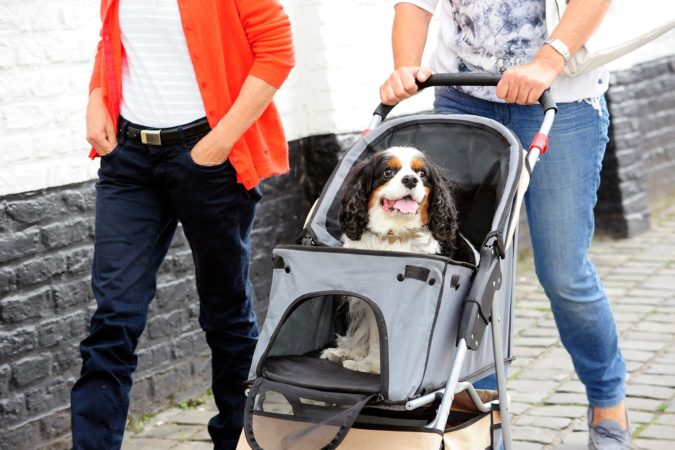

Comments